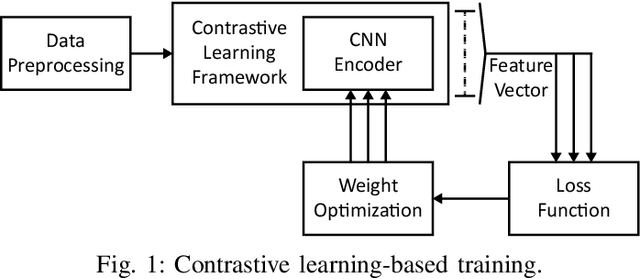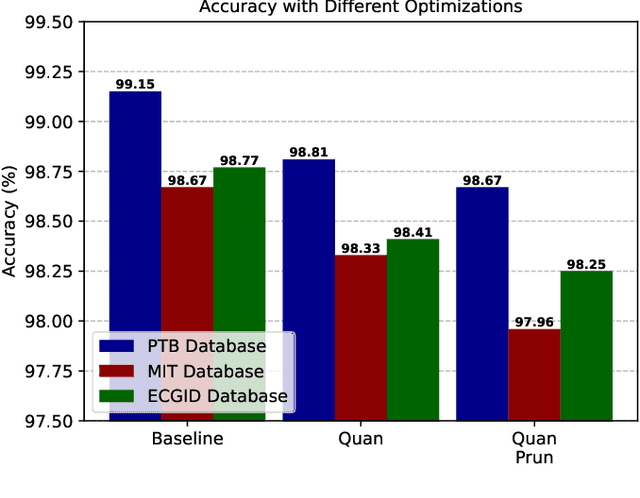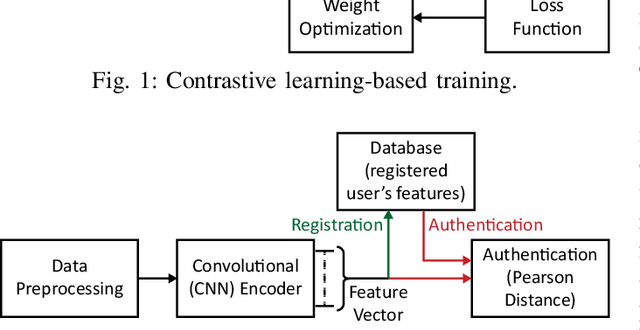ECG Biometric Authentication Using Self-Supervised Learning for IoT Edge Sensors
Paper and Code
Sep 09, 2024



Wearable Internet of Things (IoT) devices are gaining ground for continuous physiological data acquisition and health monitoring. These physiological signals can be used for security applications to achieve continuous authentication and user convenience due to passive data acquisition. This paper investigates an electrocardiogram (ECG) based biometric user authentication system using features derived from the Convolutional Neural Network (CNN) and self-supervised contrastive learning. Contrastive learning enables us to use large unlabeled datasets to train the model and establish its generalizability. We propose approaches enabling the CNN encoder to extract appropriate features that distinguish the user from other subjects. When evaluated using the PTB ECG database with 290 subjects, the proposed technique achieved an authentication accuracy of 99.15%. To test its generalizability, we applied the model to two new datasets, the MIT-BIH Arrhythmia Database and the ECG-ID Database, achieving over 98.5% accuracy without any modifications. Furthermore, we show that repeating the authentication step three times can increase accuracy to nearly 100% for both PTBDB and ECGIDDB. This paper also presents model optimizations for embedded device deployment, which makes the system more relevant to real-world scenarios. To deploy our model in IoT edge sensors, we optimized the model complexity by applying quantization and pruning. The optimized model achieves 98.67% accuracy on PTBDB, with 0.48% accuracy loss and 62.6% CPU cycles compared to the unoptimized model. An accuracy-vs-time-complexity tradeoff analysis is performed, and results are presented for different optimization levels.
 Add to Chrome
Add to Chrome Add to Firefox
Add to Firefox Add to Edge
Add to Edge